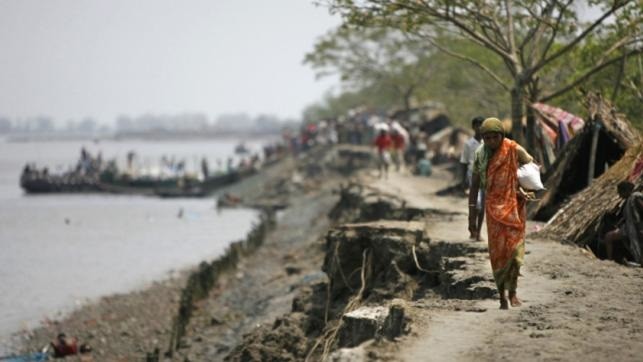Climate Migration: Bangladesh may see seven-fold hike by 2050

Bangladesh is among countries that are highly vulnerable to climate change. The picture was taken in June 2009 in Satkhira, when cyclone Aila hit the coastal region. PHOTO: REUTERS/ANDREW BIRAJ
Climate migration in Bangladesh could increase by up to seven-fold, displacing three million people from their homes by 2050 due to climate disasters, a new study found.
The rate of migration in the country is more than double the average migration rate of any other South Asian country.
The displacement and climate-related migration could rise to 900,000 by 2030.
“Under current mitigation pledges and targets demonstrating lower ambition, Bangladesh could see a seven-fold increase in displacement and distress migration by 2050,” states the study, titled “Costs of climate inaction: displacement and distress migration”, by ActionAid and its partners Climate Action Network South Asia and Bread for the World.
The study, released last week, was conducted across five South Asian countries — Bangladesh, India, Nepal, Pakistan and Sri Lanka.
According to the study, a total of 63 million people will be forced to migrate if the global community fails to limit global warming within a rise of two degrees since the pre-industrial period, a goal which was set by the Paris Agreement.
The number of displaced people due to climate change in South Asia is almost as many as global migrants due to war and conflicts, the report said.
The study calls for strong leadership and ambition from developed countries to cut emissions and support developing countries to adapt to climate change and recover from climate disasters.
Most of the migration will be caused due to events like sea level rise, lack of drinking water, drought-like situations and loss of biodiversity.
Effects of extreme weather events like floods and cyclones were not included in this study.
“Bangladesh is geographically vulnerable to climate disasters and is regularly lashed with floods and cyclones, but poverty and development deficit are also determining factors in this climate migration crisis,” said Sanjay Vashist, director of Climate Action Network South Asia.
The report also stated communities can be resilient to slow onset climate disasters, such as sea-level rise, drought, failed harvests and loss of biodiversity, but this takes money and political will.
“Our cities in Bangladesh do not have the readiness to deal with climate-induced migration,” Farah Kabir, country director of ActionAid Bangladesh, said in the statement yesterday.
The national budget shows that there has been allocations of thousands of crores of taka as climate relevant investment, she said in her statement.
However, the effectiveness of that investment for the protection of vulnerable communities from climate related disasters remains questionable, she added.
Dr Shamsuddoha, chief executive of Centre for Participatory Research and Development, said, “Our recent study indicates that 83% of the people who live in floodplain areas are directly impacted by riverbank erosion, with the majority of people being displaced multiple times.”
Source: Daily Star











